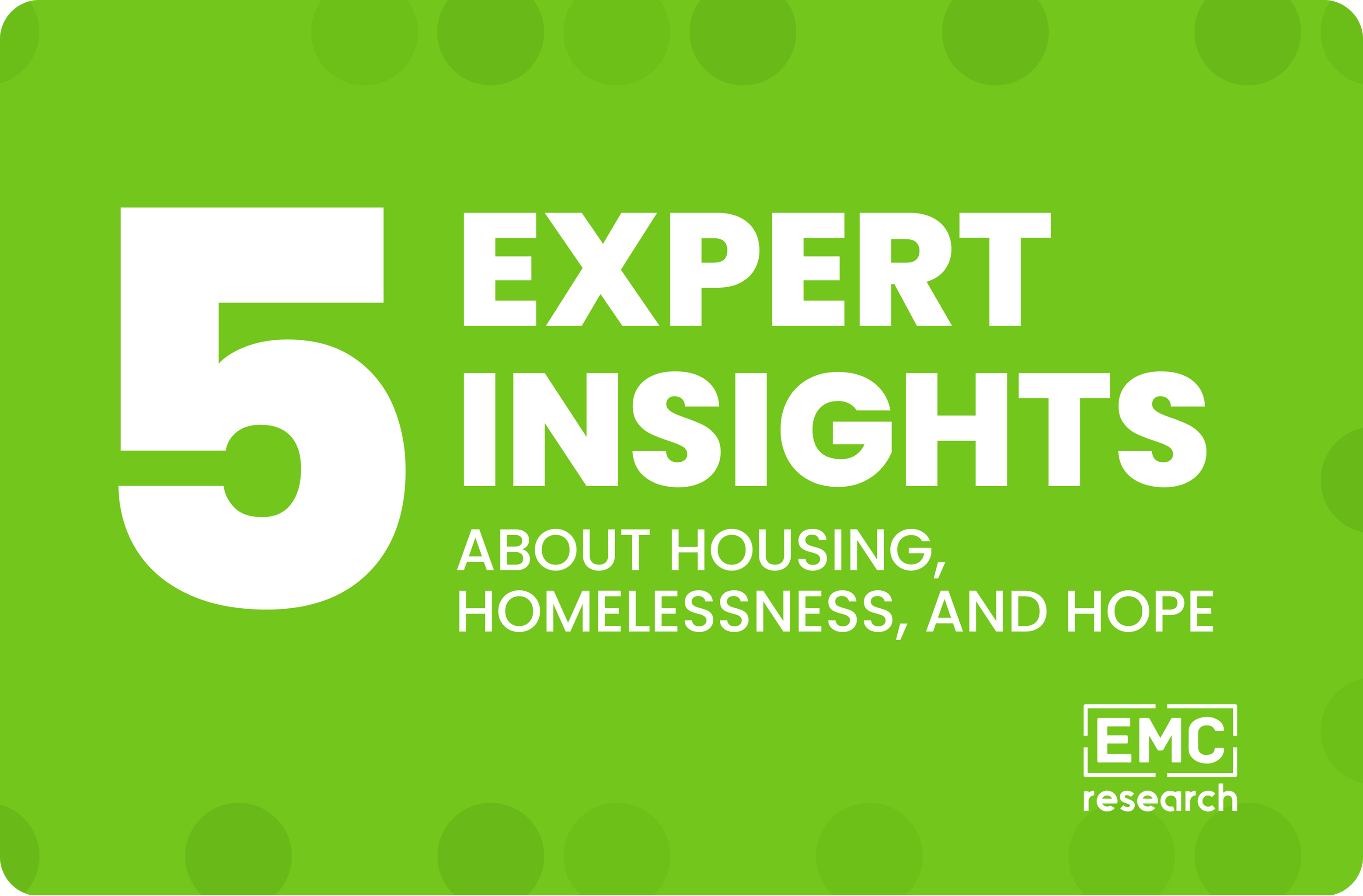
At EMC Research, we’ve spent the past 15 years working alongside housing advocates, policymakers, and campaign leaders to make affordable housing a reality for more people. We don’t craft policy ourselves, but we’re deeply committed to providing the research, insights, and strategic guidance that fuel meaningful change.
We’re proud to support organizations advancing this work across California and beyond, including the Non-Profit Housing Association of Northern California, the San Diego Housing Federation, All Home, Destination: Home, Silicon Valley at Home, Greenbelt Alliance, Santa Clara County Office of Supportive Housing, the Bay Area Housing Finance Authority, MTC Regional Housing Technical Assistance, Opening Doors Marin, Bring California Home, the Ventura County Affordable Housing Coalition, and many more.
In recent years, I’ve had the opportunity to focus intensively on housing affordability in California. As a parent, housing isn’t an abstract issue — it’s a daily reality. When my kids see unhoused individuals in our neighborhood, I want them to understand that housing is a community responsibility. It’s about ensuring that the people they go to school with, the people we pass at the grocery store — all have a safe, stable, and affordable place to live.
Housing is personal. It’s where people build their lives, find safety, and create opportunity. That’s also what makes it such a complex — and emotionally charged — issue. Through years of community-based research, we’ve identified five key insights that consistently shape public perception and drive voter behavior:

Attitudes about housing are difficult to shift.
Public sentiment on housing is deeply entrenched. While targeted efforts can create movement over time, most people won’t shift their views overnight. Our long-term tracking surveys have helped us uncover the deeper values that shape how people think and feel about housing, and what ultimately drives their decisions at the ballot box. These value-based insights help campaigns frame messages that meet people where they are.

We don’t need to convince people there’s a problem.
In regions like the Bay Area, awareness of the housing crisis is already high. More than three-quarters of voters agree that we need to build more housing in California. That means campaigns can move beyond problem identification and focus on identifying solutions. It also means we should avoid dramatic language like “crisis,” which can backfire by increasing anxiety or disengagement.

Stories about people resonate more than facts and figures.
Numbers alone don’t change minds, especially when trust in government is low and tax sensitivity is high. Voters are more likely to support housing initiatives when they can connect with the people they impact. Personal stories, real voices, and community success narratives consistently outperform statistics or dollar amounts when it comes to building support.

Talking about change in financial terms rarely works.
Large numbers — whether $20 million or $500 million — often feel abstract and inaccessible. They’re also easily politicized. We’ve learned that it’s more effective to focus on tangible outcomes: who will benefit, what will improve, and how the community will grow stronger. Emphasizing material impact over cost makes the case for investment more compelling.

Values remain the foundation of voter behavior.
Even amid polarization and fatigue, values still guide the choices people make at the ballot box. We may not be able to “change minds” in a traditional sense, but we can engage with people’s sense of fairness, responsibility, and community. When voters see affordable housing as aligned with their values, they are far more likely to support local revenue measures and long-term investments.
The more time I spend on these issues, the more optimistic I become. Community-led solutions, rooted in research and empathy, have the power to drive real change. Even organizations without major funding can use data to inform strategy, elevate underrepresented voices, and advocate more effectively.
When you do research within a community, you’re not just collecting information — you’re supporting the people doing the work. You’re giving campaigns, coalitions, and creative teams the insights they need to act with precision and confidence. And when that research comes to life in the form of new housing, changed minds, and expanded hope — that’s when the work really matters.
Emily Goodman
Senior Principal

